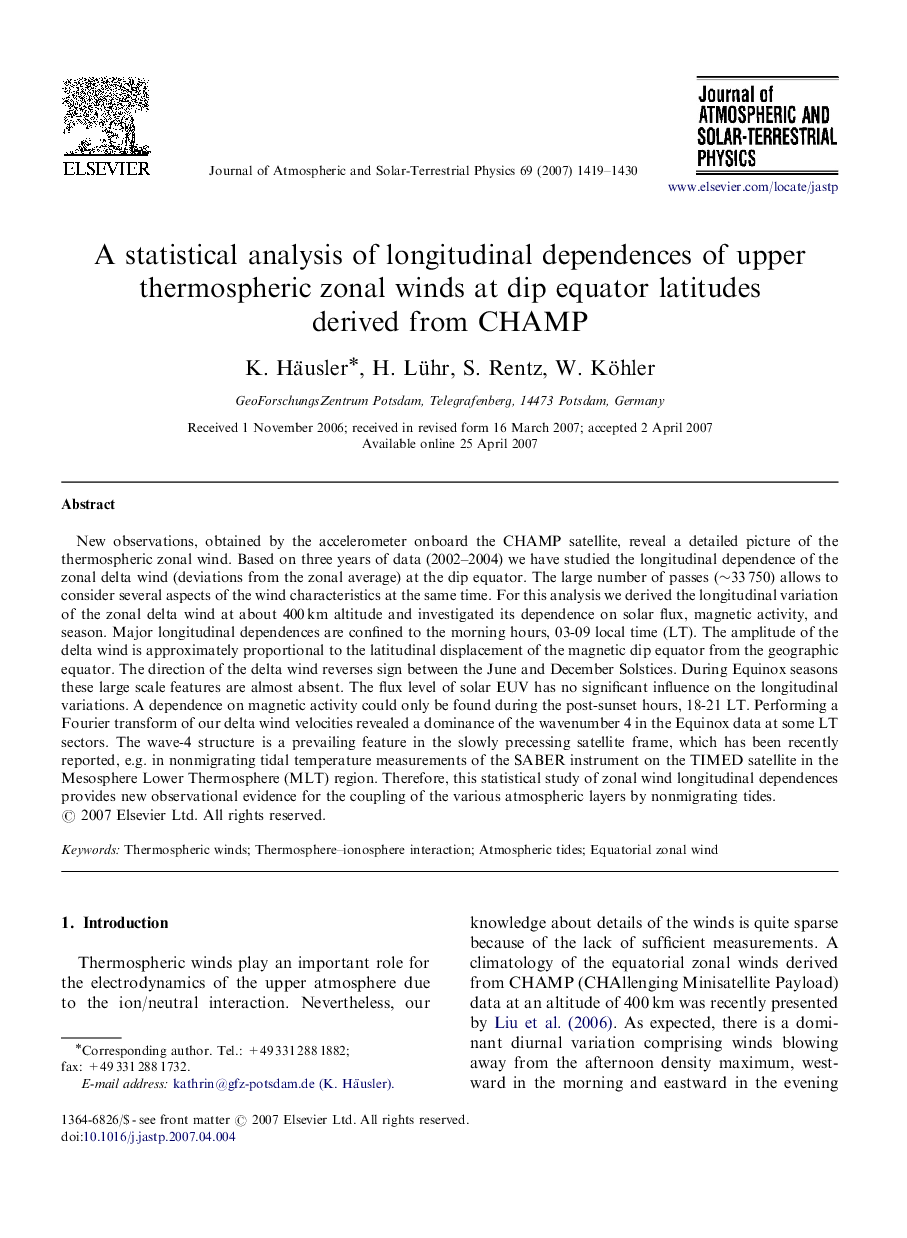| Article ID | Journal | Published Year | Pages | File Type |
|---|---|---|---|---|
| 1778062 | Journal of Atmospheric and Solar-Terrestrial Physics | 2007 | 12 Pages |
New observations, obtained by the accelerometer onboard the CHAMP satellite, reveal a detailed picture of the thermospheric zonal wind. Based on three years of data (2002–2004) we have studied the longitudinal dependence of the zonal delta wind (deviations from the zonal average) at the dip equator. The large number of passes (∼∼33 750) allows to consider several aspects of the wind characteristics at the same time. For this analysis we derived the longitudinal variation of the zonal delta wind at about 400 km altitude and investigated its dependence on solar flux, magnetic activity, and season. Major longitudinal dependences are confined to the morning hours, 03-09 local time (LT). The amplitude of the delta wind is approximately proportional to the latitudinal displacement of the magnetic dip equator from the geographic equator. The direction of the delta wind reverses sign between the June and December Solstices. During Equinox seasons these large scale features are almost absent. The flux level of solar EUV has no significant influence on the longitudinal variations. A dependence on magnetic activity could only be found during the post-sunset hours, 18-21 LT. Performing a Fourier transform of our delta wind velocities revealed a dominance of the wavenumber 4 in the Equinox data at some LT sectors. The wave-4 structure is a prevailing feature in the slowly precessing satellite frame, which has been recently reported, e.g. in nonmigrating tidal temperature measurements of the SABER instrument on the TIMED satellite in the Mesosphere Lower Thermosphere (MLT) region. Therefore, this statistical study of zonal wind longitudinal dependences provides new observational evidence for the coupling of the various atmospheric layers by nonmigrating tides.
